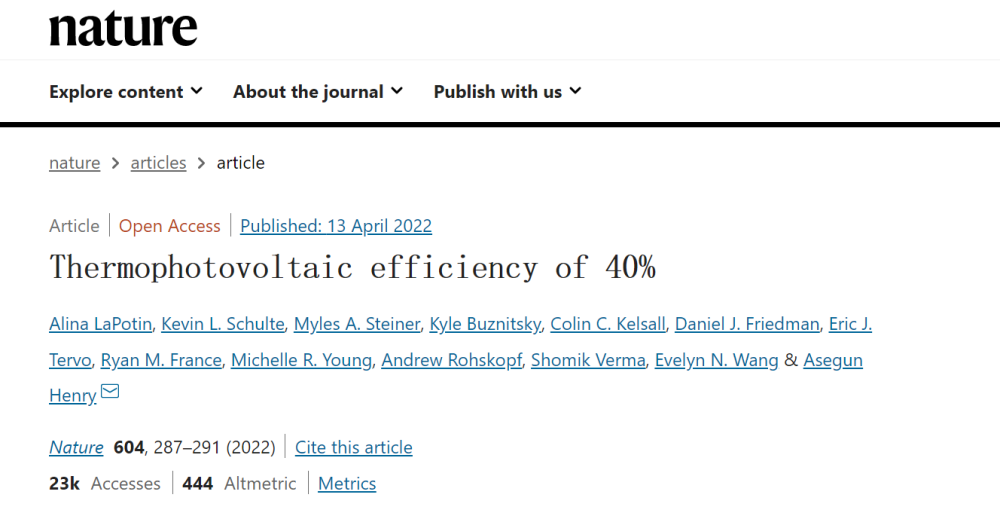Shanghai, April 21 (Editor Huang Junzhi) According to reports, a research team from the Massachusetts Institute of Technology and the National Renewable Energy Laboratory (NREL) has successfully developed and demonstrated a thermal photovoltaic (TPV) battery that can convert heat into electricity more efficiently than traditional steam turbines at a low cost. This has a huge impact on future power stations and grid energy storage.
Thermal photovoltaic (TPV) converts infrared wavelength light into electrical energy mainly through photovoltaic effects, and methods of energy storage and conversion can be realized. The researchers plan to integrate such TPV cells into grid-scale thermal batteries. The system will absorb excess energy from renewable sources such as solar energy and store this energy in highly insulated hot graphite libraries. When energy is needed, such as on a cloudy day, the TPV battery converts heat into electrical energy and distributes the energy to the grid.
As we all know, most of human electricity comes from heat energy, that is, burning coal or natural gas, nuclear fission, concentrating solar energy, which is used to boil water and rotate steam turbines to produce electricity. Over the past century and a half, it has become ubiquitous around the world as a well-established, well-optimized technology with known advantages and limitations.
One of the limitations is efficiency. While some turbines have successfully converted 60% of the energy from heat sources into electricity, the average turbine operates at only 35% efficiency. Another limitation is heat, and steam turbines rely on a number of components that must operate at a certain temperature threshold.
The new design is designed to capture higher-energy photons from sources at higher temperatures, thanks to the use of higher band gap materials and multiple junctions. In tests between 1900 degrees Celsius and 2400 degrees Celsius, the new TPV battery maintained an efficiency of about 40 percent. The average efficiency of early TPV batteries was about 20%, compared with the previous record of 32%.
The results of these studies have recently been published in the prestigious scientific journal Nature.

"The 40 percent efficiency of TPV is noteworthy because it now makes TPV a thermal engine technology that can compete with turbines," the researchers wrote. The 40% efficiency is already higher than the average efficiency of turbine-based heat engines in the United States, but what makes TPV more attractive than turbines is its lower cost, faster response time potential, simple maintenance, easy integration with external heat sources, and fuel flexibility. ”
It is understood that this new type of heat engine technology operates in a temperature range "suitable for natural gas or hydrogen combustion", bringing hope to the prospect of next-generation low-emission power plants that can extract more electricity from combustion sources at a lower cost. In the case of green hydrogen, such a plant could emit carbon without emitting carbon.
Asegun Henry, a professor in the Department of Mechanical Engineering at the Massachusetts Institute of Technology and one of the project's researchers, said: "Thermal photovoltaic cells are the final critical step in proving that thermal cells are a viable concept. This is an absolutely critical step on the road to promoting renewable energy and achieving a zero-carbon grid. ”